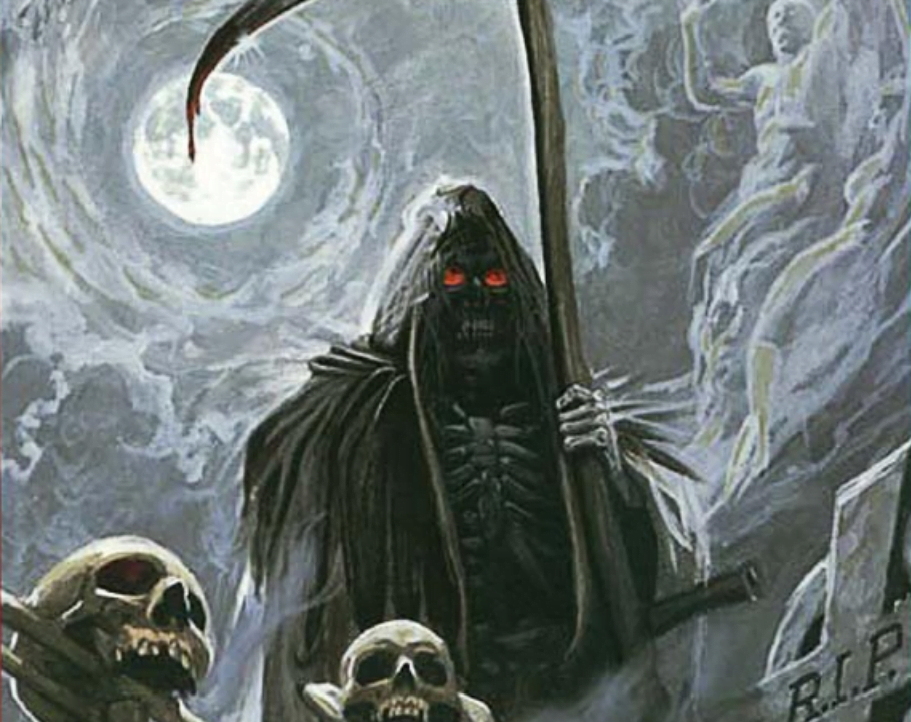One of the weird things about Planescape is that for all its infinity of infinities, in many ways the setting is also quite limiting. There are a finite number of planes (no, the Abyss doesn’t count), and there are concrete rules to the multiverse that players and DMs alike can learn to understand. Yes, there’s plenty of room available for screwing with expectations and bringing in the unexpected, but at the same time it’s meant to be a manageable version of infinity. However, that leads to some difficulties when you want to have adventures that break away from Gary Gygax’s original conception of the multiverse, which we’ll see happening in a few releases from the setting’s mid-90s heyday. Something Wild points towards one of these in its introduction, which tells DMs running the module that they might want to take a look at the Ravenloft release The Nightmare Lands for help with running an adventure in dreams. But wait, an adventure within dreams implies that they aren’t just a subconscious projection in our minds but rather a literal place, and if so then where the hell are they located in the planar cosmology? The answer, it turns out, is pretty damn stupid.
At this point, all of the outer planes have been detailed, and the inner planes don’t leave any room for extra locations either. So what about the transitive planes? Well yeah maybe they’d work, but we already know what they are, and no one has mentioned either of them with regard to dreams before. The designers Shane Lacy Hensley and (of course…) Bill Slavicsek figured out a weird loophole to this conundrum by taking a known aspect of the ethereal plane, its wall of colors, and saying, “Well what if that’s all made of dreams?”
Between the Border [Ethereal] and the Deep ,a shimmering wall of color stretches to separate on part from the other…. Those who understand the true nature of its existence … know this shimmering expanse by its real name: the dream plane.
And with that, a new plane is born. Kind of. Sort of. If you squint real hard, I guess.
All of this strikes me as rather silly, not because I dislike the idea of a dream plane, much to the contrary I like it a lot. But figuring out a dumb technicality for its location and then rationalizing rules for it is just… ugh. Let’s put it this way: I’ve run D&D games with dream adventures, and played as a PC in ones with dream adventures, and we’ve always ignored/been unaware of all this bullshit because there’s no reason to care about it.
Let’s take another moment to discuss how much this fails to make sense within the great wheel cosmology. The ethereal plane does not connect with the outer planes, which would imply that no one there is able to dream and reach this color wall. However, we know that this is definitely not the case, which implies that in fact the ethereal does link with the outer planes, despite everything else telling us this isn’t true. This may seem like a small quibble, but really it’s not, as this addition fundamentally alters the shape of the multiverse, and does so in a way that retcons it all awkwardly.
This is going to be a short blog post both because of my dislike for this weird “plane,” and because its lasting effect on the multiverse was surprisingly, though fortunately, minimal. The Nightmare Lands is a boxed set of four books, and very little material within it actually pertains to the dream plane; most of it is relevant to Ravenloft alone, which is fine by me. Worse, the book is surprisingly heavy on classification and rules wonkiness, which is what we all look for when exploring that most logical and concrete of realms, dreams. For instance, making it a hard and fast rule that dreams consist of 4-5 different levels is ridiculous, especially since this set itself violates this by saying that within its own Nightmare Lands dreams occur in a sort of combination of multiple categories. Adding piles of rules onto things is never good, even though it’s something second edition AD&D was often pretty into. Maybe it’s a Ravenloft thing, as they’re aware that nothing adds to horror as much as tedium.
In summary, the dream plane and its accompanying rules provided here are messy, ridiculous, and best ignored by both fans of Planescape and roleplayers period. They feel poorly stapled onto the multiverse, and are much clumsier than just making up your own rules for adventuring in a dream (which is essentially what Something Wild does, despite its referencing this set). The entire plane as it’s defined here may be vaguely canonical for second edition AD&D, but is nevertheless something better off forgotten. I’m including this entry for a sense of completeness, and to say that yes I am aware that this is part of the planes, but that’s really it. Now let’s go back to pretending none of this nonsense exists, and eventually we’ll come upon a more interesting and usable version of the Plane of Dreams (as a true transitive plane) in third edition D&D.




